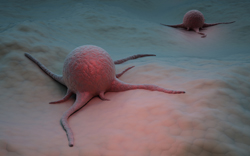DNA-modifying enzymes and cancer
Accumulating evidence indicates that there is a potential link between the DNA-modifying enzyme activation-induced cytidine deaminase (AID), inflammation and cancer development. AID is normally involved in B cell development. However, AID deregulation can induce mutations and chromosomal translocations in B cells, promoting neoplastic transformation. Its expression is controlled by several molecules like those of the Rel/NF-kappa B family. Emerging data also indicates that various cytokines can induce AID expression, implicating it in non-B cell-related malignancies. The objective of the EU-funded project ‘The role of activation-induced cytidine deaminase in inflammation-induced carcinogenesis’ (Inflaidcan) was to clarify the contribution of AID in cancer development and progression in vivo. For this purpose, scientists used mice with a deletion in the AID gene and employed a method for investigating inflammation-induced carcinogenesis. By comparing tumour incidence, size and aggressiveness between wild type and AID knockout animals, scientists found a reduced incidence of aggressive adenocarcinomas in AID knockout mice compared to wild-type animals. Additionally, it was seen that colon carcinoma cells up-regulated the expression of AID upon stimulation with the inflammatory cytokine TNF-alpha in vitro. Collectively, these data demonstrated for the first time the involvement of AID in inflammation-induced neoplastic transformation of tissues other than B cells. It is envisioned that future targeting of AID could serve as a potential therapeutic regimen for many malignancies.







